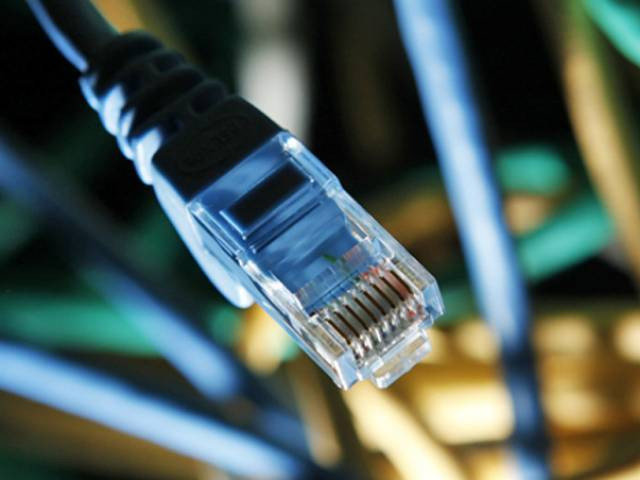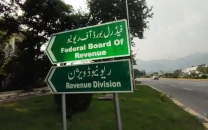Providing affordable broadband
NTC as a neutral entity could provide the solution since it has no competition issues with retail service providers

NTC as a neutral entity could provide the solution since it has no competition issues with retail service providers. PHOTO: FILE
Thus far, the e-office initiative of the Ministry of Information Technology was using borrowed storage capacity of the PTCL data centre. Ironically, NTC was carved out of PTCL (then T&T) in 1996 to save government’s sensitive information from a privatised PTCL.
3G/4G users up 3.74%, but growth slowing
Another aspect that the inaugural ceremony vividly brought out was that the NTC has finally come of age.
As Chairman Viqar Rashid Khan informed in his speech, “this public sector organisation that used to require tax-payers’ money to run is now generating profit (Rs350 million before tax last year). The NTC which could only utilise about a quarter of its ADP allocations in the past is now utilising more than three-fourths.”
Since the mandate of NTC is to provide ICT services to governmental agencies, the obvious next challenge for them is to provide high-speed data connectivity to/from the national data centre all over the country. This includes provincial and local governments, including those in the rural areas. NTC’s optic fibre network, which mostly consists of dark fibre pairs made available by PTCL in the main routes, does not comprehensively cover the country.
Issue of optic fibre connectivity
Whether it is fixed data communication from/to data centres, or last-mile retail services like 3G and 4G, nothing works nowadays without optic fibre cables in the backbones, which deliver bandwidth in wholesale, to be distributed by retail service providers.
The new Telecom Policy 2015 also recognises and addresses this reality at several places - 24 to be exact.
Optic fibres are the highways of the information age. Imagine a huge chunk of population not having access to highways; and yet another chunk of population with access but only to “toll” highways - tolls that are mostly unaffordable. All this deprives schools, healthcare centres, and importantly, businesses (Small and Medium Enterprises (SMEs), startups) of access to broadband.
The usual wholesale provider of optic fibre capacity should have been PTCL.
In most countries this responsibility is taken up by the incumbent landline operator. However, in Pakistan the privatised PTCL has a retail business too, which, understandably, it likes to protect. Any entrepreneur wishing to start retail business automatically becomes a competitor of PTCL; the same PTCL, on whom he depends for the wholesale bandwidth. It would be unfair to expect PTCL to sell wholesale bandwidth cheap.
Similarly, the 3G and 4G service providers are putting in fibres (at times in partnership with LDI operators) to cater for backhaul to their cell sites. Like for PTCL, such dedicated optic fibres are not of much use to those who are not subscribers of those service providers.
Mobile broadband demand growing at rapid pace
Thus the problem is not just of availability of optic fibres, but also of discrimination in providing access. The new Telecom Policy recognises this fact too. It promises that “PTA will put in place the regulatory framework for the provision of wholesale fibre services on a fair and non-discriminatory basis…”
So far it was hoped that with the passage of time the private sector would lay so much optic fibres in the backbones that competition among themselves would drive the prices down. That happened to an extent, but only in case of large urban centres. In fact, in-between big cities there are sometimes a glut of optic fibre capacity.
USF’s experiment of taking fibres to tehsils did provide fibre connectivity to many un-served tehsils, but could not generate competition, despite the fact that USF subsidy winners are obliged to lease out at-least one dark fibre pair to a competitor.
Lack of success has also to do with lack of any demand-side initiatives (e-Government Services).
Pakistan is not unique with this predicament. In Thailand there are massive amounts of fibre rolled out by Cellcos, but for their own use. More fibre is laid for e-Services.
India created a special purpose vehicle BBNL (Bharat Broadband Network Limited) to build/operate optic fibre networks to connect over 200,000 plus Gram Panchayats. Australia has its NBN (National Broadband Network), Kenya has NOFBI (National Optic Fibre Infrastructure), and so on.
Proposed solution
We too need to take some initiatives in this regard. In my opinion, the issue of equal and affordable access to optic fibre networks, at all locations, for everyone, can only be addressed if the state takes over the responsibility. Yes, back to public sector for this vital part of infrastructure!
This brings us back to NTC. NTC is in a unique position in that it can provide equal non-discriminatory access for all users to a country-wide fibre optic network. This is because NTC is a neutral entity, with no competition issues with existing and/or new retail service providers. In any case, sooner or later, NTC has to extend data connectivity for the governments to every nook and corner of the land.
This would require the strengthening of NTC. It does not mean NTC should start digging the entire country to lay optic fibres. That would be costly and utterly wasteful. Instead, NTC should adopt three different strategies, depending upon circumstances; utilise whatever optic fibre capacity NTC has of its own, where it does not have any, lease dark fibre pairs from existing operators, through competitive bidding and lay own fibre cables only where there are none existing.
In order to fund the capital expenditure of above, USF’s optic fibre programme (which hardly draws any competitive bids anyway) should be transformed in a way that subsidies for optic fibres are only channelled to NTC.
Beware Pakistani mobile internet users
Let us have a nation-wide public network of optic fibre cables, available and accessible for every citizen and entity, at equal terms and affordable prices.
The writer is former CEO of the Universal Services Fund and is providing ICT consultancy services in several countries of Africa and Asia
Published in The Express Tribune, August 29th, 2016.
Like Business on Facebook, follow @TribuneBiz on Twitter to stay informed and join in the conversation.


















COMMENTS
Comments are moderated and generally will be posted if they are on-topic and not abusive.
For more information, please see our Comments FAQ